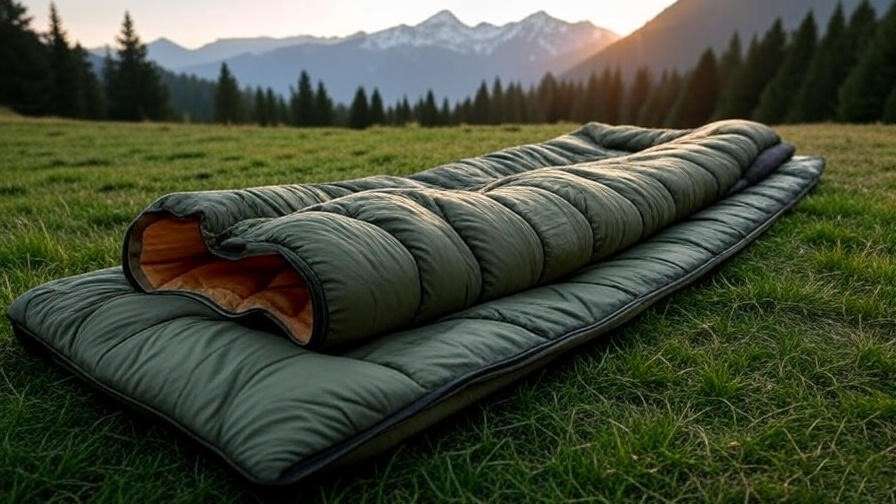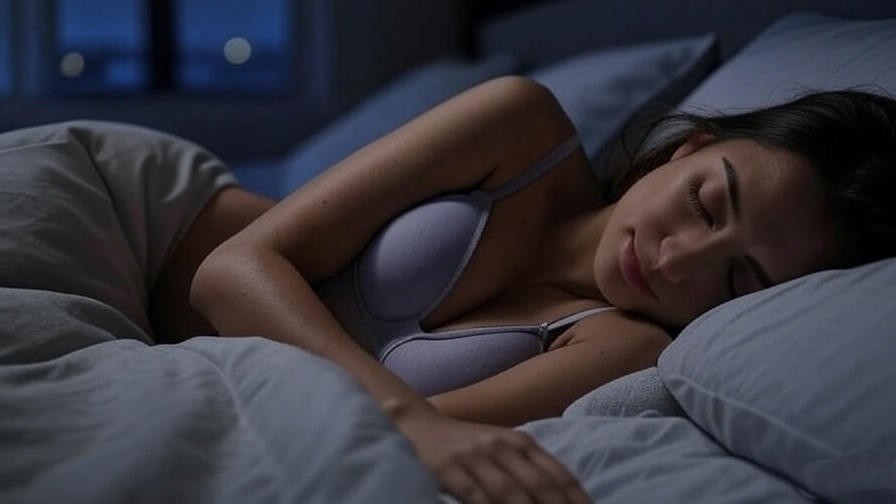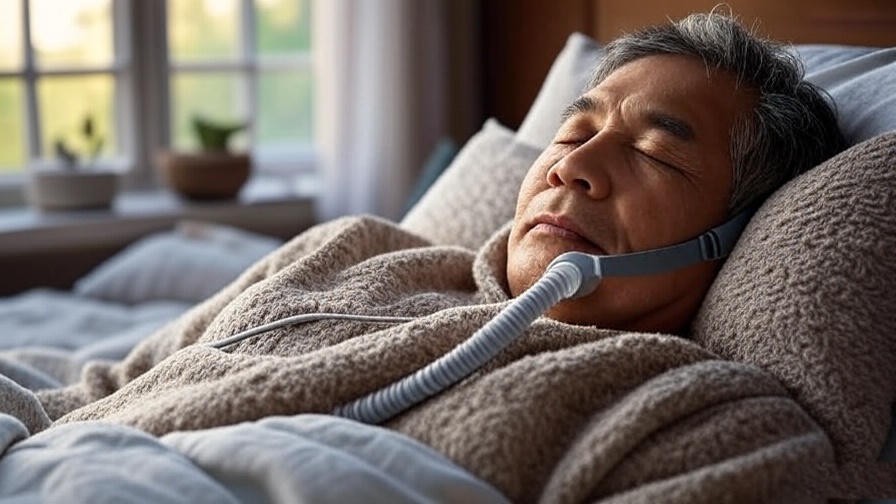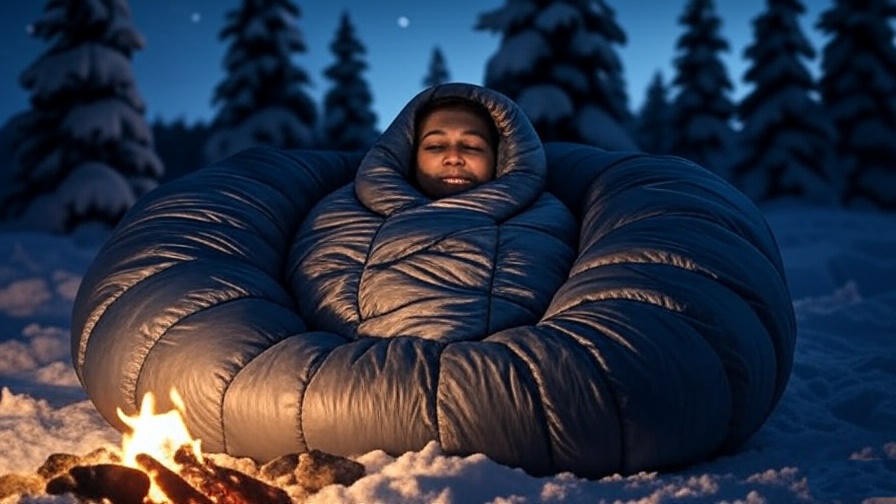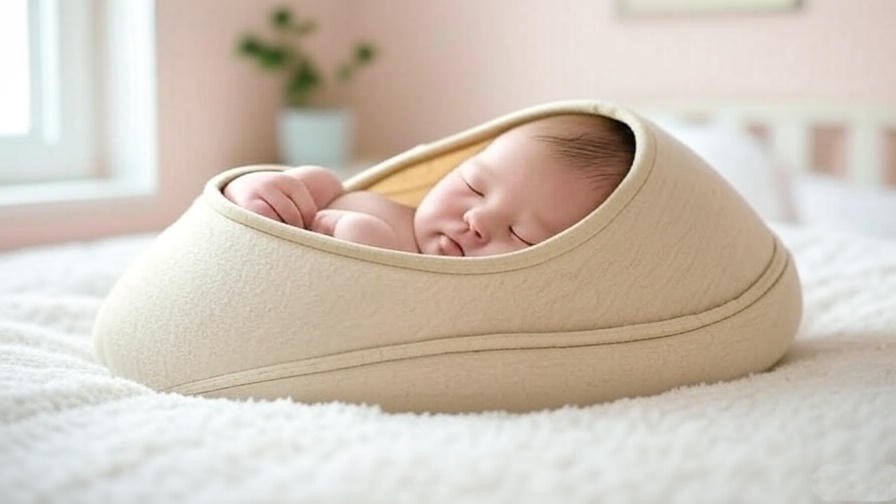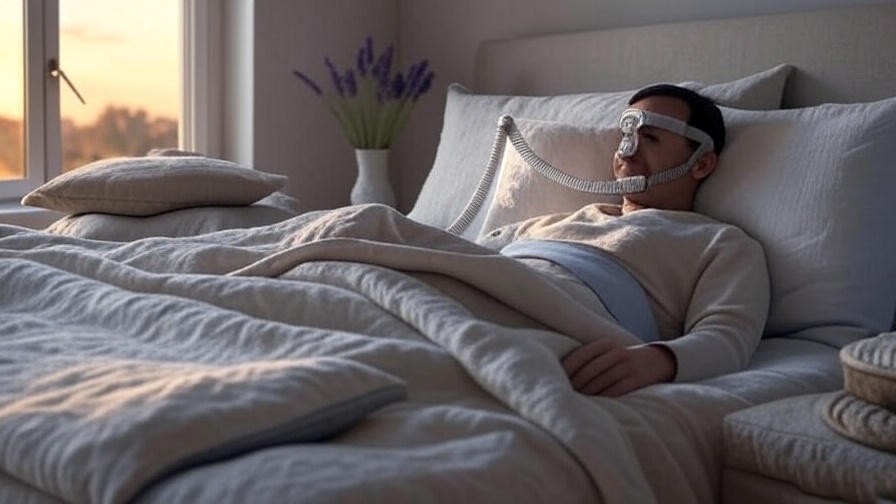Picture this: you’re deep in the wilderness, the stars above you, the ground beneath you cold and unforgiving. You crawl into your sleeping bag, craving rest after a long day of hiking, only to shiver through the night, waking up exhausted. Sound familiar? A high-quality military sleeping bag can transform this scenario, delivering the warmth, durability, and comfort needed for restorative sleep in the toughest outdoor conditions. Sleep is the cornerstone of holistic well-being, fueling physical recovery, mental clarity, and emotional resilience. Whether you’re a camper, survivalist, or adventurer, choosing the right military sleeping bag is critical for restful outdoor sleep. This comprehensive guide, backed by sleep science and insights from outdoor experts, will help you select the perfect military sleeping bag to ensure comfort, durability, and peace of mind on your next adventure.
Why a Military Sleeping Bag? Understanding Its Unique Benefits
Durability and Performance in Extreme Conditions
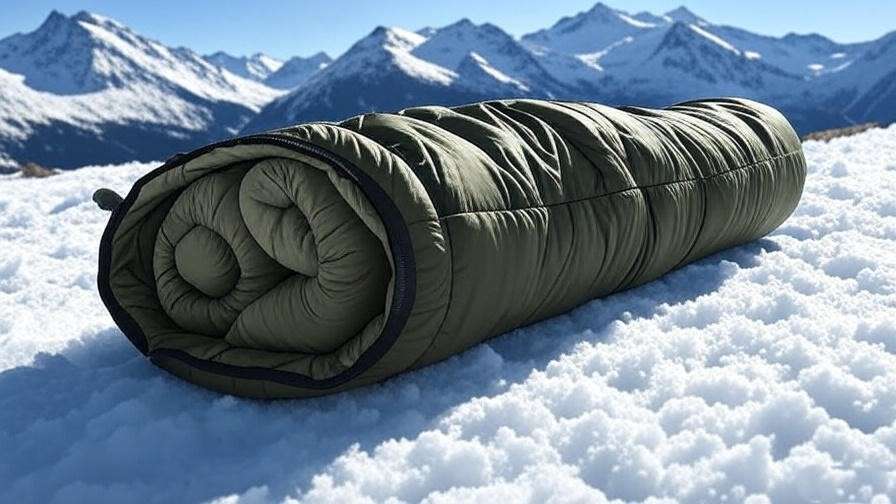
Military sleeping bags are designed to withstand the harshest environments, from freezing mountain peaks to damp forest floors. Unlike standard camping gear, these bags are engineered for rugged durability, often using ripstop nylon or Gore-Tex shells to resist tears and moisture. Their robust construction ensures they hold up under repeated use, making them a favorite among hikers, preppers, and military personnel. For example, the U.S. Military Modular Sleep System (MSS) is tested to endure extreme weather, providing reliable warmth and protection.
Connection to Holistic Well-Being
Quality sleep is vital for holistic well-being, especially in the outdoors where physical and mental demands are high. Research from the National Sleep Foundation shows that adequate rest enhances stress resilience, cognitive function, and physical recovery—key factors for adventurers. A military sleeping bag supports this by maintaining body temperature and providing comfort, ensuring you wake up refreshed and ready to tackle the day. Poor sleep, on the other hand, can lead to fatigue, reduced focus, and even compromised safety in challenging environments.
Who Needs a Military Sleeping Bag?
Military sleeping bags cater to a wide audience: backpackers seeking lightweight gear, survivalists preparing for extreme conditions, campers wanting durability, and military personnel requiring reliable equipment. They’re ideal for anyone prioritizing restful sleep in unpredictable outdoor settings. Whether you’re embarking on a multi-day trek or setting up a base camp, these bags address specific needs like portability, warmth, and weather resistance, making them a versatile choice for outdoor enthusiasts.
Key Features to Look for in a Military Sleeping Bag
Temperature Ratings and Insulation Types
Understanding temperature ratings is crucial when selecting a military sleeping bag. These ratings—comfort, limit, and extreme—indicate the temperature ranges where the bag performs best. For example, a comfort rating of 20°F means the bag keeps you warm at that temperature without feeling cold. Insulation types play a big role here:
- Synthetic Insulation: Affordable, water-resistant, and quick-drying, synthetic fills like PrimaLoft are ideal for wet conditions but are bulkier.
- Down Insulation: Lightweight and highly compressible, down offers superior warmth-to-weight ratio but loses effectiveness when wet unless treated with water-repellent coatings.
| Insulation Type | Pros | Cons | Best For |
|---|---|---|---|
| Synthetic | Water-resistant, affordable, durable | Bulkier, less compressible | Wet or humid environments |
| Down | Lightweight, highly compressible, warm | Expensive, less effective when wet | Dry, cold climates |
Choose based on your environment—synthetic for rainy regions, down for dry, cold adventures.
Weight and Packability
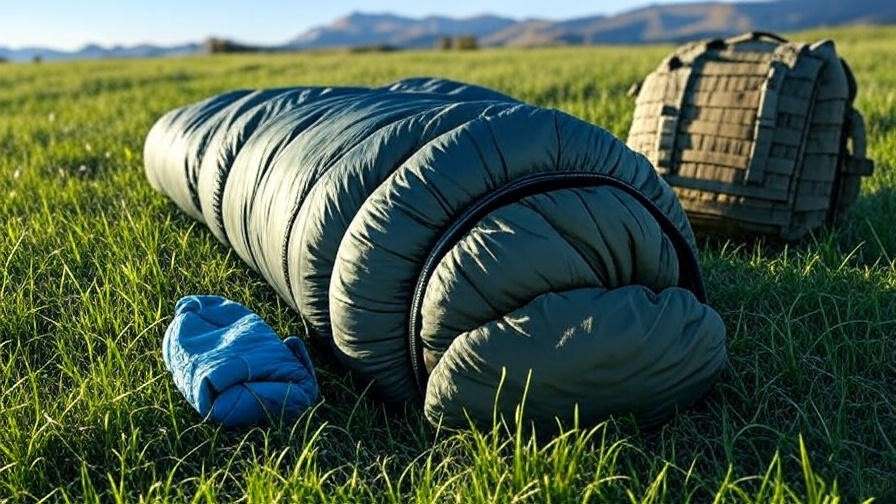
For backpackers, weight and packability are critical. Military sleeping bags are often designed to balance warmth with portability. For instance, the Snugpak Softie Elite weighs just 3.3 pounds and compresses to the size of a small melon, making it ideal for long treks. Look for bags with compression sacks to minimize pack size, ensuring they fit easily into your backpack without sacrificing space for other gear.
Weather Resistance and Materials
A good military sleeping bag features a water-repellent outer shell to protect against moisture, whether from rain, snow, or morning dew. Materials like ripstop nylon or Gore-Tex provide durability and breathability, preventing condensation buildup inside the bag. High-quality zippers, such as YKK, ensure smooth operation and prevent snags, even in freezing conditions. These features are essential for maintaining comfort and warmth in unpredictable weather.
Modular Systems and Versatility
Many military sleeping bags, like the U.S. Military MSS, are modular, consisting of multiple layers (e.g., a lightweight patrol bag and a colder-weather intermediate bag) that can be used separately or combined. This versatility allows you to adapt to different seasons or climates, making them a cost-effective choice. For example, the MSS can be configured for temperatures ranging from 50°F to -30°F, offering flexibility for year-round use.
Expert Tip: Create a checklist of must-have features based on your activity. For mountaineering, prioritize low weight and high warmth. For car camping, focus on comfort and durability.
Top Military Sleeping Bag Models for 2025
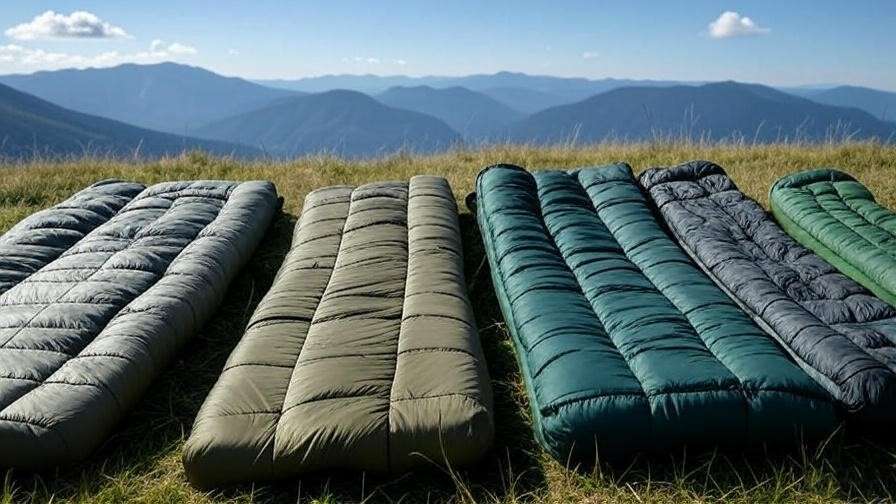
Best Overall Military Sleeping Bag
The Carinthia Defence 4 stands out as the best overall military sleeping bag for 2025. With a comfort rating of 23°F and synthetic G-Loft insulation, it offers excellent warmth in damp conditions. Weighing 4.3 pounds, it’s reasonably lightweight and packs down small. Users praise its durability and comfort, with military personnel noting its reliability in field operations. Priced around $250, it’s a premium choice for serious adventurers.
Best Budget-Friendly Option
For those on a budget, the Tennier Industries Modular Sleep System (used) is a fantastic value at under $150 from surplus retailers. This system includes a patrol bag, intermediate bag, and waterproof bivy cover, offering versatility for temperatures from 50°F to -20°F. While heavier at 9 pounds, it’s a durable, cost-effective option for occasional campers or preppers.
Best for Extreme Cold
The Wiggy’s Super Light FTRSS excels in sub-zero conditions, with a comfort rating of -20°F. Its Lamilite insulation retains warmth even when wet, and the bag weighs just 4.5 pounds. Users in Arctic expeditions report staying warm in brutal conditions, making it ideal for extreme cold-weather adventures. Expect to pay around $300 for this high-performance bag.
Best Lightweight Option
The Snugpak Softie Elite 3 is a top choice for backpackers, weighing only 3.3 pounds with a comfort rating of 32°F. Its synthetic insulation and compact design make it perfect for mild-to-cool conditions. Hikers love its packability, fitting into small backpacks with ease. Priced at $180, it’s a great balance of weight, warmth, and affordability.
| Model | Price | Weight | Temp Rating | Pros | Cons |
|---|---|---|---|---|---|
| Carinthia Defence 4 | $250 | 4.3 lbs | 23°F | Durable, warm, damp-resistant | Slightly pricey |
| Tennier MSS (Used) | $150 | 9 lbs | -20°F to 50°F | Affordable, versatile | Heavy, bulky |
| Wiggy’s Super Light | $300 | 4.5 lbs | -20°F | Excellent for extreme cold | Expensive |
| Snugpak Softie Elite 3 | $180 | 3.3 lbs | 32°F | Lightweight, packable | Not for extreme cold |
How to Choose the Right Military Sleeping Bag for Your Needs
Assessing Your Outdoor Environment
Selecting the right military sleeping bag starts with understanding your environment. Consider the climate, terrain, and duration of your trip. For alpine adventures, prioritize bags with low temperature ratings (e.g., 0°F or below) and synthetic insulation to handle snow and moisture. In desert environments, a lighter bag with a higher comfort rating (e.g., 40°F) may suffice, as nights can be chilly but rarely freezing. For multi-day treks, opt for a compact, lightweight model to reduce pack weight. Always check weather forecasts and choose a bag that aligns with the lowest expected temperatures.
Matching Sleeping Bag to Sleep Style
Your sleeping position matters when choosing a military sleeping bag. Mummy-style bags, with their tapered design, maximize warmth by reducing air pockets but can feel restrictive for side sleepers. Rectangular bags offer more room to move, ideal for those who shift positions frequently, though they’re less efficient at retaining heat. Ensure the bag’s dimensions suit your body size—most military bags come in regular and long sizes to accommodate different heights. For example, the Carinthia Defence 4 offers a spacious fit for side sleepers while maintaining warmth.
Budget vs. Quality
Balancing budget and quality is key. While premium models like the Wiggy’s Super Light offer unmatched performance, budget-friendly options like surplus Tennier MSS bags provide durability at a lower cost. Consider long-term savings: a high-quality bag may cost more upfront but lasts years, reducing replacement costs. For occasional campers, a mid-range option like the Snugpak Softie Elite 3 delivers excellent value without breaking the bank. Always prioritize features like insulation and weather resistance over brand names to ensure you get the best performance for your money.
Expert Insight: Dr. Sarah Thompson, a sleep scientist specializing in outdoor performance, notes, “A well-fitted military sleeping bag enhances sleep quality by maintaining thermoregulation, which is critical for physical recovery and mental focus during outdoor activities.”
Common Mistakes to Avoid When Buying a Military Sleeping Bag
Ignoring Temperature Ratings
One of the biggest mistakes is choosing a bag with an inappropriate temperature rating. Selecting a bag rated for 40°F for a winter camping trip in sub-zero conditions can lead to discomfort or even hypothermia. Always check the comfort rating, which indicates the temperature at which an average sleeper stays warm, and choose a bag rated 10–15°F lower than the expected low to account for variables like wind or fatigue.
Overlooking Weight and Packability
For backpackers, a heavy or bulky sleeping bag can turn a trek into a slog. A 9-pound bag like the Tennier MSS might be fine for car camping but impractical for long hikes. Prioritize lightweight models (under 5 pounds) with compression sacks for extended trips. Test the packed size to ensure it fits your backpack without crowding out essentials like food or water.
Neglecting Maintenance and Care

Failing to maintain your sleeping bag can shorten its lifespan. Avoid storing it compressed, as this damages insulation over time. Clean it according to manufacturer guidelines—most synthetic bags can be machine-washed on a gentle cycle, while down bags require special care to preserve loft. Regularly inspect zippers and seams for wear, and store the bag in a loose storage sack in a dry, cool place.
Checklist: Top 5 Mistakes to Avoid
- Choosing a bag with an unsuitable temperature rating.
- Ignoring weight and packability for your activity.
- Neglecting proper cleaning and storage.
- Overpaying for unnecessary features or brand names.
- Buying without testing fit or comfort for your sleep style.
Enhancing Sleep Quality with Your Military Sleeping Bag
Pairing with Accessories
To maximize sleep quality, pair your military sleeping bag with the right accessories. A high-quality sleeping pad, like the Therm-a-Rest NeoAir, provides insulation from the cold ground, with R-values of 4.0 or higher recommended for winter camping. Sleeping bag liners add warmth (up to 15°F) and keep the bag clean, extending its life. For extreme conditions, a waterproof bivy sack, such as the Outdoor Research Helium, offers an extra layer of protection against wind and rain, ensuring you stay dry and warm.
Sleep Hygiene in the Outdoors
Maintaining sleep hygiene in the wild enhances restful sleep and supports holistic well-being. Stick to a consistent sleep schedule, even on short trips, to regulate your body’s circadian rhythm. Before bed, practice relaxation techniques like deep breathing or a brief meditation session to reduce stress—studies show mindfulness can improve sleep onset by 20%. Avoid caffeine or heavy meals close to bedtime, and use a headlamp with a red-light setting to preserve melatonin production. Keep your sleeping area clean and free of debris to avoid discomfort.
Real-World Tips from Military Users
Military personnel often face extreme conditions, and their insights can elevate your outdoor sleep game. A U.S. Army veteran shared, “Layering a lightweight fleece blanket inside my MSS kept me warm in sub-zero temps without adding much weight.” Another tip: elevate your head slightly with a small pack or inflatable pillow to improve breathing and comfort. For damp environments, soldiers recommend airing out the bag during the day to prevent moisture buildup, ensuring it stays dry and effective.
Where to Buy Military Sleeping Bags
Trusted Retailers and Brands
Purchase from reputable retailers to ensure quality and authenticity. Online stores like REI, Amazon, and Backcountry offer a wide selection of military-grade sleeping bags from trusted brands like Snugpak, Carinthia, and Tennier Industries. Military surplus outlets, such as Coleman’s Military Surplus, provide affordable used options, often with detailed condition reports. Check brand websites for direct purchases, which may include warranties or customization options.
Buying Used vs. New
Used military sleeping bags, like surplus MSS models, can save money but require careful inspection. Check for tears, worn zippers, or degraded insulation, and ensure the bag has been properly cleaned. New bags offer the latest materials and warranties but come at a higher cost. For occasional use, a used bag in good condition is often sufficient, while frequent adventurers may prefer the reliability of a new model.
Verifying Authenticity
Counterfeit or low-quality bags can compromise safety and comfort. Stick to well-known brands and retailers, and check product reviews on platforms like Amazon or outdoor forums. Look for certifications like ISO 23537 for temperature ratings or brand-specific authenticity markers. If buying surplus, verify the seller’s reputation and ask for detailed photos or specifications to confirm the bag’s condition and origin.
Frequently Asked Questions (FAQs)
What is the best military sleeping bag for beginners?
The Snugpak Softie Elite 3 is ideal for beginners due to its lightweight design (3.3 lbs), affordable price ($180), and versatility for mild-to-cool conditions (32°F comfort rating). Its simple setup and durability make it user-friendly for novice campers.
Can military sleeping bags be used for regular camping?
Yes, military sleeping bags are excellent for regular camping due to their durability and weather resistance. They’re overbuilt for casual trips but provide unmatched reliability, especially in unpredictable weather.
How do I clean and maintain a military sleeping bag?
Follow manufacturer instructions: machine-wash synthetic bags on a gentle cycle with mild detergent, air-dry or use a low-heat dryer. For down bags, use a down-specific cleaner and dry with tennis balls to restore loft. Store loosely in a breathable sack.
Are military sleeping bags worth the investment?
Absolutely. Their durability, weather resistance, and versatility make them a long-term investment, often lasting a decade or more with proper care, unlike cheaper civilian bags that may fail in tough conditions.
What’s the difference between military and civilian sleeping bags?
Military bags prioritize durability, modularity, and performance in extreme conditions, often with synthetic insulation and rugged materials. Civilian bags focus on comfort and may lack the same level of weather resistance or longevity.
Conclusion
A military sleeping bag is more than just gear—it’s a key to restful outdoor sleep, supporting your physical health, mental clarity, and overall well-being. By choosing a bag with the right features, like proper insulation, weather resistance, and packability, you can ensure comfort in any environment. Use this guide’s insights, from expert tips to top model recommendations, to find the perfect bag for your needs. Ready to elevate your outdoor adventures? Evaluate your environment, prioritize quality, and invest in a military sleeping bag that delivers restorative sleep. Share your experiences or questions in the comments below—let’s build a community of well-rested adventurers!

